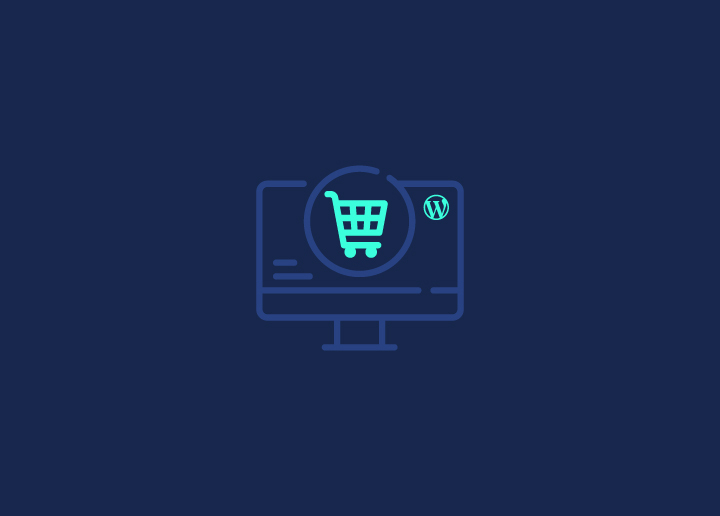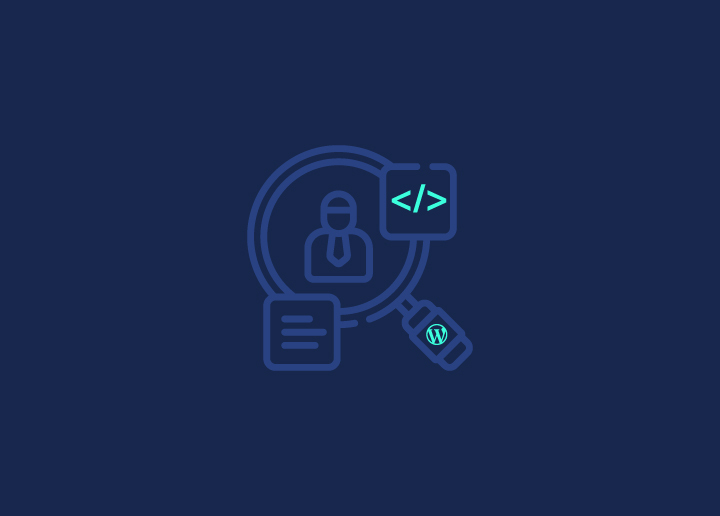In digital commerce, establishing an eCommerce store has become imperative for businesses looking to thrive online. An eCommerce store allows entrepreneurs to showcase and sell products or services globally, transcending geographical constraints. WordPress, a versatile content management system, emerges as an ideal platform for this purpose.
This blog is a comprehensive guide detailing the step-by-step process of setting up and launching an eCommerce store using WordPress. From initial setup to customization and integration of essential features, we will navigate through the intricacies, empowering aspiring online retailers to unlock the full potential of their business ventures.
Contents
ToggleWhy is eCommerce Cost-Effective for Retailers?
eCommerce offers retailers a cost-effective way to conduct business, providing several advantages that contribute to operational efficiency and financial savings. Here’s a brief overview:
- Reduced Overhead Costs: Physical storefronts involve significant expenses like rent, utilities, and maintenance. eCommerce eliminates the need for a brick-and-mortar presence, resulting in substantial savings.
- Global Reach at Lower Marketing Costs: Online platforms allow retailers to reach a global audience without the need for extensive marketing budgets. Digital marketing tools like social media and search engine optimization offer cost-effective ways to promote products.
- Inventory Management Efficiency: eCommerce platforms often integrate with inventory management systems, automating stock tracking and order processing. This minimizes the risk of overstocking or understocking, reducing associated carrying costs.
- Streamlined Operations: Automation features in eCommerce streamline various processes, such as order fulfillment, payment processing, and customer support. This not only enhances operational efficiency but also reduces the need for a large workforce.
- 24/7 Accessibility: eCommerce enables businesses to operate around the clock without incurring additional labor costs. This continuous availability enhances customer satisfaction and potentially increases sales.
- Data-Driven Decision-Making: eCommerce platforms provide valuable data and analytics, aiding retailers in making informed decisions. Understanding customer behavior, preferences, and market trends allows for more effective and targeted strategies.
- Cost-Effective Scalability: Unlike physical expansions that involve significant investments, scaling an eCommerce business can be more cost-effective. Increasing product offerings or expanding into new markets can often be achieved with digital infrastructure adjustments.
- Personalized Marketing: eCommerce allows for personalized marketing efforts based on customer data. Tailoring promotions and recommendations leads to more effective marketing campaigns, maximizing the return on investment.
Want To Start Selling Online?
With our help, you can easily set up a professional WooCommerce store. Say goodbye to complicated setups and hello to increased sales and success!
Setting Up an eCommerce Store With WordPress
In this digital age, where convenience and accessibility are paramount, an online storefront opens doors to a vast customer base. So, let’s check out how to start an eCommerce store with WordPress.
Choosing the Right Hosting for Your eCommerce Store
Selecting a reliable hosting provider is crucial for the success of your eCommerce store. Here’s why:
- Performance & Speed: Opt for a hosting provider that ensures fast loading times. Slow websites can drive potential customers away and negatively impact search engine rankings.
- Scalability: Your hosting plan should be scalable to accommodate the growth of your online store. A provider that offers different plans or easy scalability options is ideal.
- Security Features: Security is paramount for an eCommerce site. Look for a hosting provider that offers regular website backups, SSL certificates, and robust security protocols to safeguard customer data.
- Customer Support: Quick & reliable customer support is essential in online business. Choose a hosting provider with a reputation (check reviews) for excellent customer service. This will ensure any issues are addressed promptly.
Choosing the Right Domain Name
A well-chosen domain name is vital for brand identity and customer recall. Consider these factors:
- Relevance to Your Brand: Your domain name should reflect your brand’s products or services. Keep it simple, memorable, and relevant to your niche.
- Easy to Spell and Pronounce: Avoid ambiguous names that might confuse potential customers. A straightforward, easy-to-spell domain enhances accessibility and word-of-mouth referrals.
- Keyword Inclusion: Include relevant keywords in your domain to improve search engine optimization (SEO). This can help potential/existing customers find your site (online) more easily.
- Domain Extension: While “.com” is the most common and often preferred extension, consider other options like “.store” or “.shop” if your desired domain is unavailable with a “.com” extension.
Installing WordPress on Your Chosen Hosting Provider
Log into your hosting account and navigate to the control panel. Most hosting providers have a one-click WordPress installation option.
- Choose WordPress and Complete Installation: Look for the WordPress icon or installer in your control panel. Follow the prompts and install WordPress on your domain. Provide necessary information like your site name, username, and password.
- Verify Installation: Once the WP installation is complete, verify by visiting your domain. You should see the default WordPress site. Now, you can log into the WordPress dashboard using the credentials you set during installation.
Essential Settings and Configurations for Optimization
- Permalinks: Go to Settings > Permalinks and choose a structure that includes the post name. This improves SEO and makes your URLs more user-friendly.
- Site Title and Tagline: Set a concise and descriptive site title along with a tagline. This information appears in search engine results and helps users understand your site’s purpose.
- General Settings: Configure date, time, and language settings under General Settings. Ensure the correct time zone to schedule posts and updates effectively.
- Update WordPress and Plugins: Regularly update your WordPress version and installed plugins to access new features, security patches, and performance improvements.
Read: How To Setup All In One SEO For WordPress
Integrating eCommerce Functionality with WooCommerce
In your WordPress dashboard, go to Plugins > Add New. Search for “WooCommerce,” install, and activate it. Follow the setup wizard to configure basic store details, currency, and payment options.
- Product Setup: Create your first product by navigating to Products > Add New. Add product details and images, and set prices. WooCommerce provides a user-friendly interface for product management.
- Payment Gateways: Configure payment gateways such as PayPal, Stripe, or others based on your preferences. Ensure secure and reliable options for your customers.
- Shipping and Tax Settings: Set up shipping methods and tax rules in WooCommerce. Define shipping zones, rates, and tax calculations to align with your business model.
- Themes and Customization: Choose a WordPress theme compatible with WooCommerce or install a dedicated eCommerce theme. Customize your site’s appearance to align with your brand identity.
Designing and Customizing Your eCommerce Store
Selecting the right WordPress theme is pivotal for your eCommerce store’s success. Here’s why:
- First Impressions Matter: A visually appealing theme creates a positive first impression, capturing visitors’ attention and encouraging them to explore your products.
- User-Friendly Navigation: Choose a theme with intuitive navigation, making it easy for customers to find products, browse categories, and complete purchases. User-friendly interfaces contribute to a seamless shopping experience.
- Brand Consistency: The theme should align with your brand identity, incorporating colors, fonts, and overall aesthetics that resonate with your business. Consistent branding enhances recognition and trust.
- Compatibility with WooCommerce: Ensure the chosen theme is compatible with WooCommerce to seamlessly integrate eCommerce functionality.
Know more: Importance Of Website Design Services
Tips on Customizing the Theme to Match Your Brand
Upload your logo and customize branding elements like colors and fonts within the theme settings. Consistent branding reinforces your identity across the site.
- Homepage Layout: Customize the homepage layout to showcase featured products, promotions, or key categories. Use clear calls-to-action to guide visitors to explore and shop.
- Product Pages: Optimize product pages with high-quality images, detailed descriptions, and a user-friendly layout. Highlight key product features and include a persuasive copy to encourage conversions.
- Navigation Menu: Streamline the navigation menu, organizing it logically with clear categories. Easy navigation enhances the user experience and helps visitors quickly find what they want.
- Custom Widgets and Sidebars: Utilize custom widgets and sidebars to display special offers, related products, or customer reviews. These additions can enhance engagement and drive sales.
Significance of Responsive Design and Mobile Optimization
Responsive design ensures your eCommerce store looks and functions well on various devices, including smartphones and tablets. This broadens your audience reach, capturing users on different platforms.
- Improved SEO Performance: Google prioritizes mobile-friendly websites in search rankings. A responsive design positively influences your site’s SEO, potentially improving visibility and organic traffic.
- Enhanced User Experience: Mobile optimization contributes to a positive user experience by providing a seamless and efficient shopping process on smaller screens. This can lead to higher conversion rates and customer satisfaction.
- Adaptability to Changing Trends: With increasing users accessing websites via mobile devices, staying responsive ensures your eCommerce store remains adaptable to evolving user preferences and technological trends.
Managing Products, Payments, and Security
In the WordPress dashboard, navigate to Products > Add New. Fill in product details such as title, description, color, price, and images. Assign relevant categories and tags to organize your product catalog effectively.
- Product Variations: For products with different variations (e.g., sizes or colors), use WooCommerce’s variation feature. This allows customers to choose the specific options they desire.
- Inventory Management: Track and manage your inventory by setting stock levels and receiving notifications for low stock. This helps prevent overselling and keeps your product information accurate.
- Product Categories and Tags: Organize your products into categories and tags for easy navigation. This enhances the customer experience and facilitates effective search engine optimization (SEO).
Integrating Secure Payment Gateways
WooCommerce supported payment gateways like PayPal, Stripe, and Square. Select a payment gateway according to business needs and customer preferences.
- Payment Gateway Integration: In the WooCommerce settings, go to the Payments tab and configure your chosen payment gateway. Input the necessary credentials and settings provided by the selected gateway to enable smooth transactions.
- SSL Certificates for Security: Implement Secure Sockets Layer (SSL) certificates to encrypt data exchanged between your website and users. SSL ensures secure transactions and boosts customer trust by displaying a padlock icon in the browser address bar.
- Secure Customer Data Handling: Follow best practices for handling customer data securely. Avoid storing sensitive information, and if necessary, use reputable third-party services for payment processing to offload security responsibilities.
Implementing Security Measures
Schedule regular backups of your website to safeguard against data loss. WordPress plugins like UpdraftPlus or Jetpack can automate this process.
- Update WordPress and Plugins: Keep your WordPress installation, themes, and plugins up to date. Regular updates include security patches/fixes that protect your site from vulnerabilities.
- Two-Factor Authentication (2FA): Enable two-factor authentication for additional security. This adds additional protection by requiring website users to verify their identity through a secondary method like a mobile app or SMS.
- Monitor User Access: Limit access to your WordPress dashboard to authorized users. Regularly review & revoke user access for inactive or unnecessary accounts to prevent unauthorized entry.
Learn: How To Create A Small Business Website With WordPress
To Sum Up
Our guide to launching a WordPress eCommerce store has provided you with the fundamental steps from setting up the platform to managing products, payments, and security. With the support of WooCommerce, WordPress offers a user-friendly and powerful solution for aspiring online retailers. Remember, your site’s visual appeal, user experience, and security are also paramount.
For those seeking professional assistance, hiring experts in WordPress website development ensures a seamless and tailored solution. Whether you’re a novice or an experienced entrepreneur, tapping into professional help can elevate your eCommerce venture, ensuring it thrives in the competitive digital marketplace.




